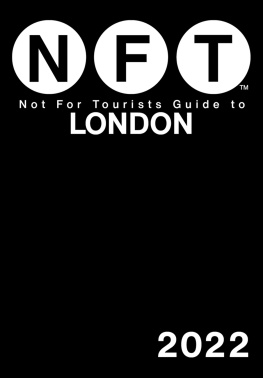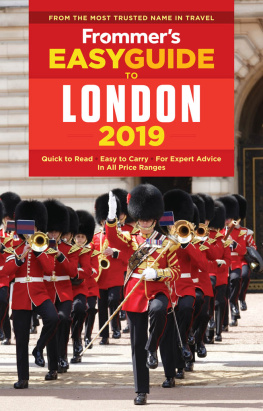THE PAGEANTRY OF LONDON
In addition to its historic buildings London retains many evidences of its long history, such as picturesque ceremonies, some of which have been performed for centuries, and they add a welcome splash of colour to London life.
The Changing of the Guard
When the King is in residence this takes place in the forecourt of Buckingham Palace at 10.30 every morning. The new guard, headed by the full band, march into the forecourt, where they are met by the old guard. They salute each other and the sentries are relieved at both Buckingham Palace and St. Jamess Palace ; meanwhile the band plays selections of music. When the changing of the guard has been completed the band, playing an exhilarating march, leads the old guard through the centre gates back to barracks. The guard is furnished by one of the five regiments of the Brigade of Guards. When in their scarlet tunics and bearskins, the regiments can be distinguished by the plumes in their bearskins : white for Grenadier, red for Coldstream, no plume for Scots, blue for Irish, and white and blue for the Welsh.
The Horse Guards
The guard mounted in Whitehall by troopers of the Household Cavalry dates from the time of Charles II. Every day at 11 a.m., on Sundays at 10 a.m., the full ceremony of Changing the Guard takes place. When the King is in London an officer is present with a trumpeter and the Standard is carried and with due ceremony the old guard is relieved. The mounted men at the gate are relieved without ceremony every hour.
Trooping the Colour
This brilliant ceremony is carried out on Horse Guards Parade by the Guards in June in celebration of the Kings birthday. It originated in the eighteenth century and is the only ceremony of its kind in the world. Men from the Brigade of Guards are on parade with the full bands of their regiments. An officer carrying the Colour, with an escort, passes slowly along the ranks of the men. The guardsmen then march past the King first in slow time, then in quick step, while their bands play the Regimental Marches. Finally, led by the King and with the massed bands playing, they march off along the Mall. Rehearsals are held in Horse Guards Parade for several mornings preceding the ceremony.
The Lord Mayors Show
This most popular of London pageants is hundreds of years old. It had its origin in the decree of King John that the newly-elected Lord Mayor of London should have to take the oath before the Law Lords. For centuries the journey to Westminster was made along the Thames and the banks of the river were crowded to see the State barges and decorated boats. When the Law Courts were built in the Strand it became a street procession. Each year, on November 9th, the procession starts from the Guildhall, makes its way through the City to Ludgate Hill and Fleet Street to arrive at the Law Courts about mid-day. After the swearing-in, the procession re-forms and continues along the Strand and by way of the Embankment back to the Guildhall. It is always a brave display, with the Lord Mayor in his richly ornamented gilt coach preceded by a cavalry escort and bands of the Guards and other regiments, detachments of soldiers, sailors and airmen and a cavalcade of decorated vehicles. It is the custom for each Lord Mayor to arrange that his show features in its display some aspect of civic or national life.
The State Opening ofParliament
One of the most colourful of Londons ceremonial pageants. It usually takes place early in November, also after a General Election. The King and Queen drive in their gilded State coach from Buckingham Palace to Westminster by way of the Mall, Whitehall and Parliament Street with a full escort of the Household Cavalry and the Yeomen of the Guard from the Tower of London. When the King arrives at the Houses of Parliament a salute of guns is fired by the Royal Artillery.
The Re-opening of the Law Courts
This ceremony takes place annually on October 12th, unless it happens to be a Saturday or Sunday, in which case the ceremony is held on the Friday or Monday. During the afternoon the Judges and members of the Bar attend a special service in Westminster Abbey to which the general public is admitted. Following the service they proceed to the Law Courts and, garbed in their robes and gowns, enter the building in dignified procession.
HOW TO SEE LONDON IN ONE DAY
Vast as London is, a visitor with only a few hours to spare can see most of its principal sights and may even be able to visit the interior of some of the buildings. The following circular tour by bus, with two short walks, can be done with comfort in a few hours and can be started at any one of the points printed in capital letters. The best viewpoint is one of the front seats on the upper deck of the bus.
TRAFALGAR SQUARE
Behind the Nelson Column is the National Gallery with St. Martin-in-the-Fields on your right. The buses going citywards start from the side of the church. Take a No. 11, 13 or 15 to St. Pauls Cathedral. This goes along the Strand, passing (right) Charing Cross Station, with the Charing Cross in the forecourt, and the Savoy Hotel (right). After turning into Aldwych with India House (right), Bush House (right), Kingsway (left), it returns to the Strand by Australia House (right), passing the bomb-ruined Church of St. Clement Danes, in the centre of the road, and the Law Courts on the left. The Griffin, in the middle of the road, indicates the site of the old Temple Bar and the boundary of the City of London. Just opposite, on the right, Middle Temple Lane leads into the Temple. Along Fleet Street you will see the great newspaper offices and on the left St. Dunstans Church and a glimpse of the wedding cake spire of St. Brides Church. Across Ludgate Circus and up Ludgate Hill, now bereft of some of its famous shops, to
ST. PAULS CATHEDRAL
Here alight and take a No. 13 Bus to the Monument. This will carry you along Cannon Street to the Monument commemorating the Great Fire of 1666. From here turn left and walk along East-cheap and Great Tower Street to the Tower of London. Walk along the river frontage ; if you face the Thames, London Bridge is on your right and Tower Bridge on your left. Go up the steps leading to Tower Bridge and there take a No. 42 or 78 bus to Aldgate. This proceeds, past the Royal Mint (right) and Tower Hill (left) along the Minories to
ALDGATE
Here alight. On the right is Aldgate High Street leading to Whitechapel and the docks. Take a No. 25B bus coming from there and take a ticket for Oxford Circus. This will take you along Leadenhall Street ; notice Lloyds (left), and Cornhill; at the end of the street are the Royal Exchange (right), Mansion House (left) and, also on the right, the Bank of England. Going along Cheapside look on the right for a glimpse of the Guildhall. Here you will see many evidences of the blitz, including the shattered Church of St. Mary-lc-Bow (left). The bus now turns into Newgate Street with the General Post Office Buildings on the right and the Central Criminal Court, Old Bailey, on the left. On Holborn Viaduct is the bombed City Temple and farther along on the left the old Elizabethan houses of Staple Inn. The road continues straight on, past Kingsway on the left, into New Oxford Street and on the right you will get a glimpse of the British Museum. Alight at
OXFORD CIRCUS
Here take a No. 73 bus to Hyde Park Corner. This will take you along Oxford Street with its famous shops to Marble Arch, where it turns south and goes along Park Lane with Hyde Park on the right to
HYDE PARK CORNER
Alight here, cross the road, Piccadilly, to the Arch at the top of Constitution Hill. Walk down the slope, with Green Park on your left, to Buckingham Palace. On your left is the Victoria Memorial and the Mall. Cross the front of the Palace and bear to the right into Buckingham Palace Road which will bring you to










